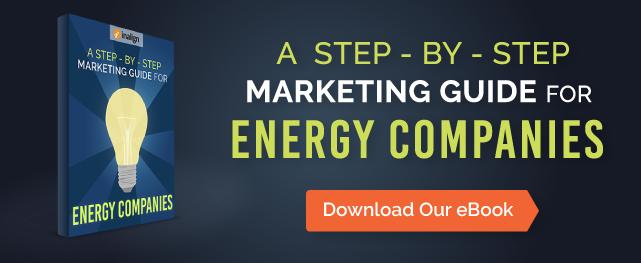When visitors first arrive at your website, most often landing on your homepage, they usually take just three to five seconds to decide whether to stay or go elsewhere. Marketers sometimes refer to this as the "blink test."
Your homepage needs to be designed to quickly allow visitors to decide if your website offers them what they are looking for.
For energy service companies, many consumers are not familiar with your brand and how to go about buying electricity and/or natural gas from a non-utility supplier.
The job of your homepage is to convey what your brand is about and to provide a clear path for visitors to learn about plan options or get their questions answered.
Think about your homepage as your company's online storefront. People pass by, take a quick look and decide whether or not to stop in based on what they initially see.
Your homepage is comprised of images, graphics, headlines, text (limited), call-to-action buttons and navigation menus that all need to work in harmony to quickly convey the right messages and lead visitors to the next step.
Not every visitor will want to stay on your website and that's okay because your website should be designed to attract your buyer personas. These are the visitors who are most likely to become leads and customers.
Keeping in mind your buyer personas, here are six questions your homepage should answer for them:
1) What Does Your Company Do?
Make sure your homepage clearly conveys:
- That your company is a retail energy business
- The states or geography your company serves
- The type of consumers your company serves – residential, small business, industrial, government, etc.
You'll want your website visitors to see all of this upfront. If your company doesn’t serve the area where I live I’d like to know that before I start exploring your website.
In the example below, it's clear that this company is in the retail energy business, they serve both homeowners and business owners, and they provide a simple drop down menu to find your state or province.

2) Who is Your Website For?
Design your website to your buyer personas. In this homepage example, the company makes it easy to know the three types of consumers they serve and how to quickly get to the next step in the buying cycle.

3) How is Your Company Different From Competitors?
The headline, text and hero image on this homepage clearly convey the company's value proposition – an electricity provider “that saves you money while doing good in the world.”

4) Why Should I Trust Your Company?
Testimonials are a great way to convey trust.

5) Where Should I Go Next?
In addition to designing your website around your buyer personas, it should also be designed around the buying cycle or "buyer's journey" for each persona.
In the homepage example below, buyers who are in the "consideration stage" and not ready to buy just yet have several options to learn more and get their questions answered.

6) How Can I Contact You?
Placing contact information in the header and footer ensures that visitors can access this information on any site page. Website users are also used to seeing "Contact Us" either in the main navigation, usually located to the far right, or in the footer.
In the example below, the website is a responsive design which means it is optimized for viewing on any device. On mobile devices, the telephone number displays underneath the company logo and is hyperlinked so mobile users can easily call the company.

Conclusion
You only have a few seconds to connect with visitors to your website before they decide to stay or leave. Design your website for your buyer personas and where they are in the buying cycle. Make sure your homepage answers each of the six questions above.








